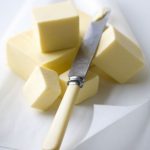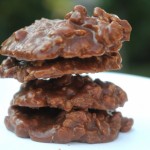Margarine is an imitation butter spread used for spreading, baking and cooking and was first created in France in 1869 to create a butter substitute for the armed forces and lower classes. It was later named margarine. Since the butter was expensive and was not affordable by the people from the lower classes and was also too expensive to serve to mass gatherings, this later substitute came as a cheaper version of butter. So ever wondered how Amul which sells the butter at around whopping prices has market competitors for just half the prices. Well the answer is just simple, it is not butter but margarine. Though the calorie content of regular butter and margarine is the same, however, choosing light butter or light margarine can cut your calories in half.
Here are few differences between a butter and a margarine…..
– Butter is made out of fat of milk and is derived by churning milk fat or cream, therefore it is a dairy product. Margarine on the other hand is a non dairy product which is made mainly of refined vegetable oil and water.
– Since butter is a dairy product it contains cholesterol and is higher on saturated fat than margarine. Therefor we generally see labels like cholesterol free or so much percent less cholesterol on the packaging of margarine. On the other hand margarine has a higher percentage of polyunsaturated and monounsaturated fats. In some cases it may also contain trans fat which is not a very good reason to consume it.
– Butter provides dairy fat whereas margarine is a plant based fat.
– The butter tastes much better than a margarine. Since butter is a dairy product there is a difference in taste, texture, and nutrition of both the things.
– Margarines that contain higher amounts of fats are best for baking, as those with less fat will contain more water and will cause tougher baked products.
.
Content reference: Wikipedia
Image reference: Pinterest






